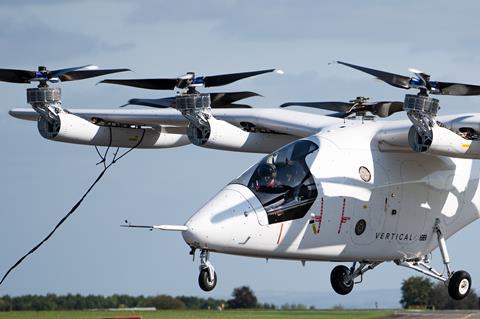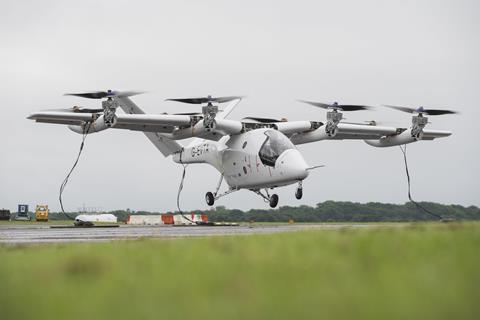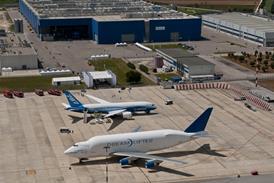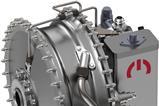Vertical Aerospace needs to secure a minimum of $25 million – a sum still outstanding from founder Stephen Fitzpatrick – to ensure that it continues as a going concern into the second half of next year, the company has disclosed.
At present the ‘projected cash runway’ extends until the second quarter of 2025, the UK-headquartered electric vertical take-off and landing (eVTOL) aircraft developer disclosed in its half-year results, released on 17 September.

Although boasting of its “industry-leading capital efficiency”, during the six months to 30 June, Vertical recorded an operating loss of £20 million ($25 million), at that date holding cash and cash equivalents of £67 million.
But by mid-September, that figure had been reduced by £19 million to £48 million – the firm expects to burn a total of £40-45 million in the second half, it says.
Spending to the end of the year will be “in relation to the advancement of Vertical’s piloted flight-test programme”, it says.
That effort has gathered pace in the second half, with the firm recently announcing the completion of tethered flight tests using the latest prototype of its VX4 eVTOL aircraft.
“Vertical is now preparing to progress to piloted untethered thrustborne testing, as soon as it receives permission from the CAA [Civil Aviation Authority],” it says.
“The flight tests have already shown the aircraft’s incredible stability – particularly in ground effect, typically one of the most challenging flight conditions.”
But to keep the process on track, and the firm above water, additional financing is required.
“As previously announced, Vertical will need to raise capital to fund its future operations and remain as a going concern,” it says.
“Vertical intends to do so [raise funds] and is in discussions regarding potential third-party investment.”

But the picture is made more complicated by the involvement of founder Stephen Fitzpatrick. In February, he promised to inject two tranches of $25 million into the company, only the first of which has been received.
As the results note, the balance remains outstanding: “The timely receipt of an amount equal or equivalent to the second tranche committed [by Fitzpatrick] is required to extend its projected cash runway into the third quarter of 2025 (from the second quarter of 2025).”
Vertical says it is “in discussion with regards to the second $25 million tranche of the investment committed”.
The financial pressure was eased slightly in the first half the year thanks to a payment from Rolls-Royce of $34 million, related to the May cancellation of an agreement to supply the VX4’s electric propulsion units.
In addition, the firm may gain additional funding through its acceptance on to the UK Ministry of Defence’s Uncrewed Air Systems Heavy Lift Challenge framework.
A £95 million initiative, the framework is to define and test cargo drone solutions for the Royal Navy for ship-to-ship and ship-to-shore resupply missions.
“Acceptance onto this framework means Vertical can participate in tenders issued by the Royal Navy, facilitating Vertical’s access to R&D funding, development support and in particular, the collaboration across the uncrewed air system community that [it] provides,” says Vertical. Its VX4 is a manned platform, however.
Meanwhile, Fitzpatrick has moved to increase his control of the company, on 17 September calling an extraordinary general meeting (EGM) to vote on several resolutions related to the appointment or dismissal of directors.
To take place on 30 September, the EGM will vote on several issues, including proposals to “remove the independence requirements of certain appointed directors” and introduce a “right for the shareholders of the company holding the majority of the issued and outstanding shares… to remove general directors by written instruction”.
Separately, on 16 September, US stock market-listed Vertical announced a reverse stock split, converting every 10 shares to one, in order to maintain a share price above $1, a condition of its continued acceptance on the New York Stock Exchange.































